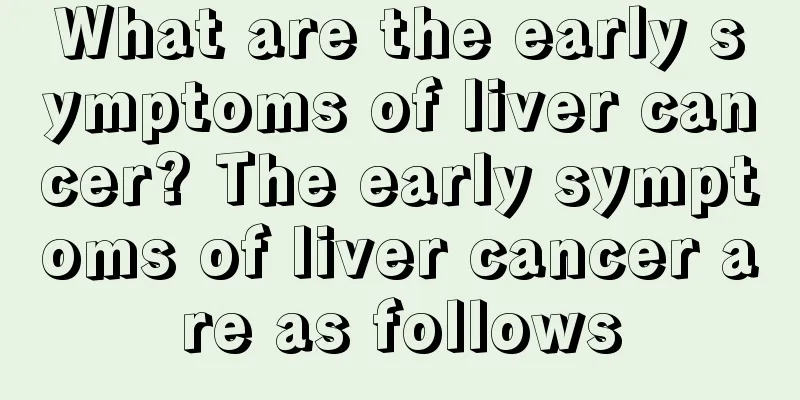What kind of examinations should be done to check for liver cancer? Five examination items that liver cancer patients must know

|
Liver cancer is a relatively serious disease, and friends are no stranger to it. The examination for this disease is relatively complicated and thorough. It is almost a systemic examination. Understanding these is actually very helpful for the treatment of the disease. Below we will introduce to you in detail some common examination items for liver cancer. 1. The most commonly used examination is liver ultrasound. Ultrasound examination is a non-invasive examination and has no adverse effects on human tissues. It is simple to operate, intuitive and accurate, low-cost, convenient and non-invasive, and widely popular. It can be used for the screening of liver cancer and follow-up after treatment. 2. CT has become an important routine means of diagnosing liver cancer. Abdominal enhanced CT scans can clearly show the size, number, shape, location, boundary, tumor blood supply, and relationship with the intrahepatic ducts of liver cancer, which is important for further clarifying the diagnosis and distinguishing it from other benign liver lesions. At the same time, it is also important to clarify the staging and grading of liver cancer, which is important for guiding treatment and judging prognosis. Image analysis software can also be used to reconstruct the various ducts in the liver, accurately track the course of blood vessels in each liver segment, the relationship between tumors and blood vessels, simulate the surgical resection plane, and calculate the volume of the pre-resected tumor and the remaining liver volume, greatly improving the safety of the operation. 3. Liver-specific MRI can improve the detection rate of small liver cancer. It is also helpful for differentiating liver cancer from focal hyperplastic nodules and hepatic adenomas, and can serve as an important supplement to CT examinations. 4. pET (positron emission tomography)-CT whole-body scan can understand the overall condition and evaluate tumor metastasis, and can more comprehensively determine the tumor stage and prognosis, but it is relatively expensive and is generally not used as the first choice. 5. Selective hepatic artery angiography is an invasive examination. Since liver cancer is rich in blood supply, mainly supplied by the hepatic artery, hepatic artery angiography can clearly show the blood supply of small liver lesions and tumors. After a clear diagnosis, iodized oil can be injected to block the tumor supply vessels to achieve the purpose of treatment. It is suitable for patients who have not been diagnosed after other examinations. Patients with hepatitis B and C should have regular checkups, and if possible, they should have annual physical examinations. Liver B-ultrasound is the most basic examination. |
Recommend
What is the reason for congenitally large eye bags
For those who love beauty, what they hate most in...
The harm of drinking hot water from a plastic cup
When buying a cup to drink water, people usually ...
How long can tonic water be kept
In fact, few people know about tonic water. Some ...
What should I do if I still miss her after breaking up?
Nowadays, it is very common for young people to f...
Breast cancer patients can eat Tripterygium wilfordii, oyster and seaweed soup
Diet therapy can not only supplement the patient&...
What do the vertical lines between eyebrows represent
Vertical lines between the eyebrows are a relativ...
How to care for aging skin
Of course, when caring for aging skin, we should ...
Can bone cancer be cured at the age of 14?
Can bone cancer be cured at the age of 14? Bone t...
Tips for preventing lymphoma in daily life
Lymphoma is a common malignant tumor. Its inciden...
Traditional methods for treating cervical spondylosis are easy and practical
Cervical spondylosis is very harmful to people. I...
What is ablation therapy for liver cancer? Analysis of ablation therapy for liver cancer
At present, the methods for treating liver cancer...
How to treat thyroid cancer without surgery
If thyroid cancer patients do not undergo surgica...
Treatment of Cardiac Cancer
The treatment methods for cardiac cancer mainly i...
Late-stage symptoms of liver cancer
Liver cancer is a serious disease that will show ...
What are the symptoms of kidney cancer
The early symptoms of kidney cancer are often not...









